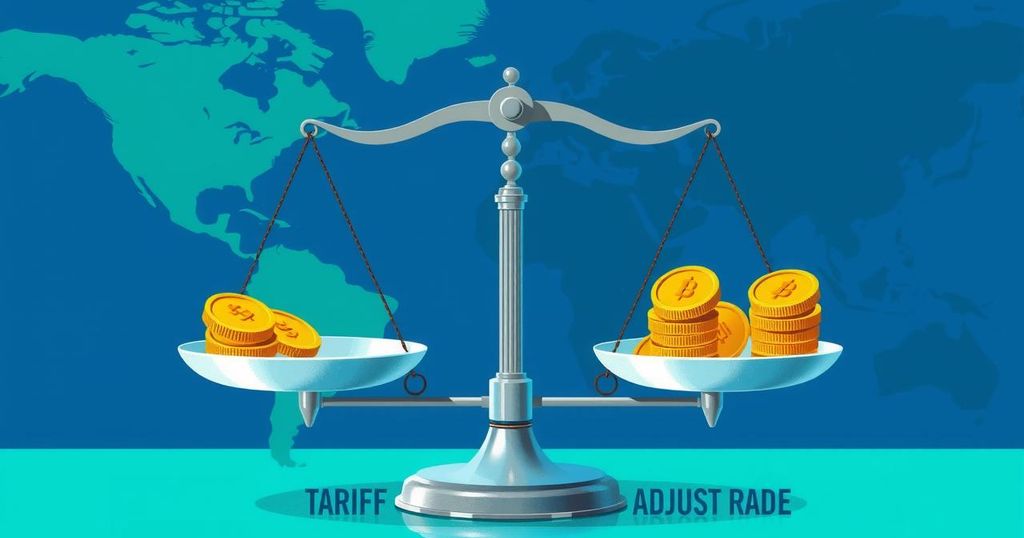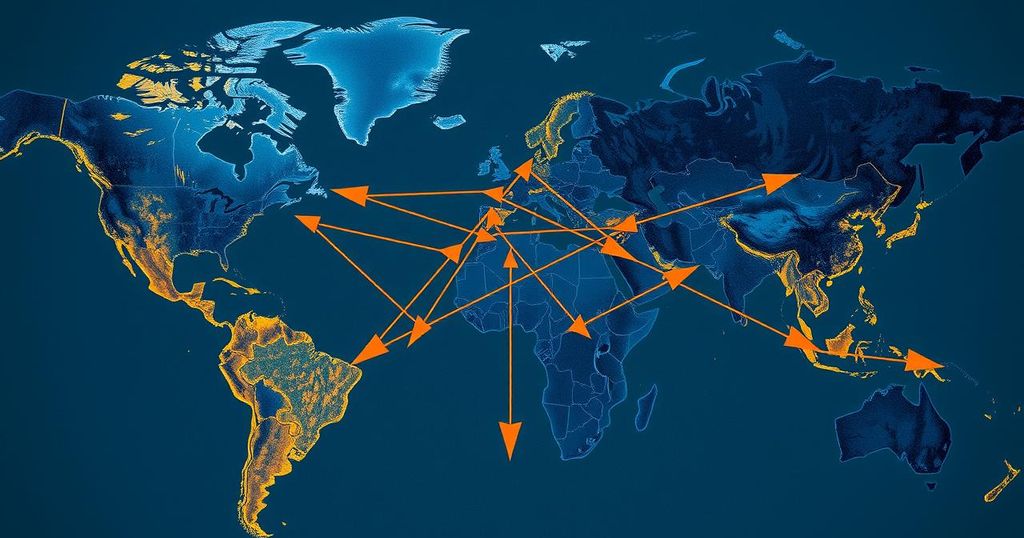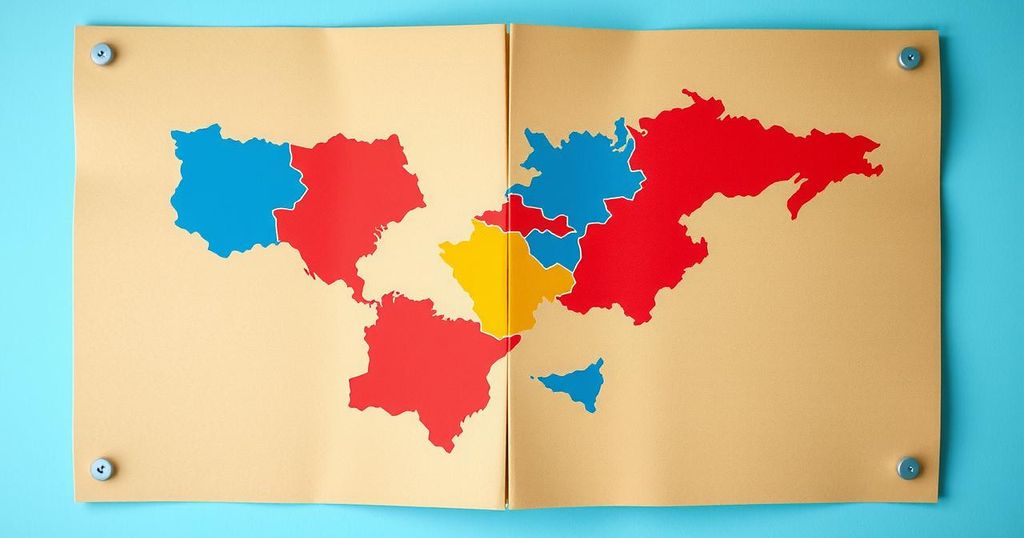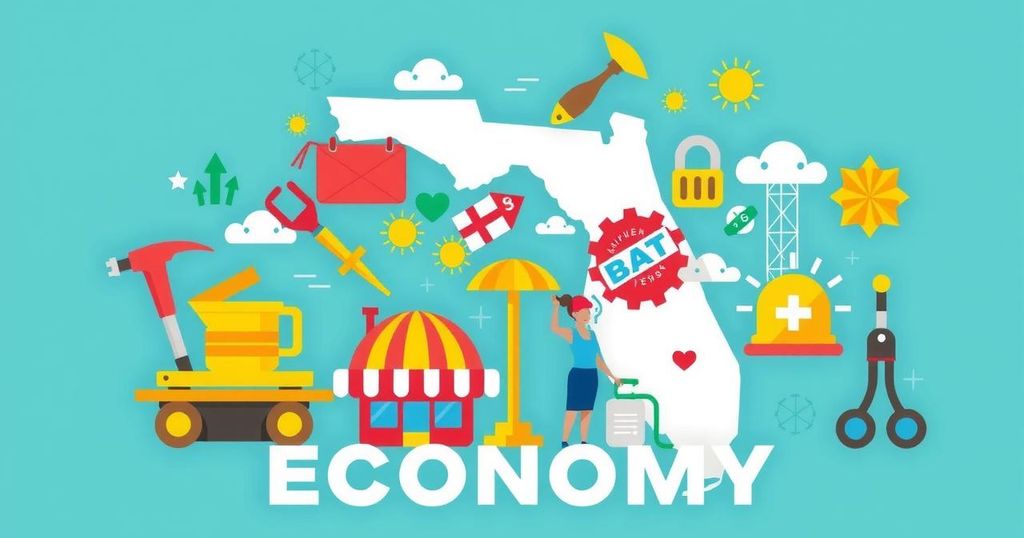Trump’s ‘Liberation Day’ Tariffs to Impact Global Trade Starting April 2
President Trump announced that the “Liberation Day” tariffs will affect all nations starting April 2, rejecting limits to specific countries. The tariffs, aimed at rebalancing trade and generating revenue, come amid global trade concerns, particularly for countries like India, which faces criticism for high import tariffs. The Indian government is considering reducing tariffs on U.S. imports to alleviate the impact on exports, particularly in sectors such as steel and pharmaceuticals.
United States President Donald Trump announced that the comprehensive “Liberation Day” tariffs will commence on April 2 and will apply to all nations. He dismissed previous claims suggesting a limited focus of these tariffs on fewer countries, stating, “You’d start with all countries. Essentially all of the countries that we’re talking about. So let’s see what happens.” Trump emphasized the importance of these tariffs in generating significant revenue for the country while pledging to treat international trade partners more favorably than in the past.
The initiation of “Liberation Day” signifies the start of reciprocal tariffs aimed at rebalancing international trade frameworks, ensuring that tariffs imposed by other nations on the United States are matched. Trump’s previous tariffs of 25 percent on aluminium, steel, and automotive imports, especially from China, have already altered trade dynamics. Notably, the specifics regarding implementation, calculation rates, and potential exemptions remain unclear, although the President indicated that non-tariff measures would also be considered in the tariff evaluations.
The impending tariffs have sparked global trade concerns, particularly affecting markets in countries like India, which Trump has criticized for its elevated import duties, dubbing it the “tariff king.” Currently, India imposes an average tariff of 17 percent on U.S. imports, significantly higher than the U.S average of 3.3 percent. The S&P Global Ratings agency has identified India, along with South Korea and Thailand, as vulnerable economies that could be negatively impacted by heightened tariffs.
In response to the forthcoming tariffs, the Indian government is reportedly considering a strategic reduction of tariffs on numerous U.S. imports to cushion the blow from Trump’s policies, especially since India exported approximately $33.4 billion worth of goods to the U.S. between April and December 2024. Discussions on a potential bilateral trade agreement with the U.S. are underway, but no mention of reciprocal tariffs appeared in the recent joint statement following talks between U.S. officials and Indian representatives.
Export sectors sensitive to these tariffs, including steel, aluminium, pharmaceuticals, textiles, and electronics, are bracing for potential revenue losses. The United States is a primary export destination for India, and these new tariffs could significantly impact the profitability of many corporations in these sectors.
In summary, President Donald Trump’s “Liberation Day” tariffs, effective April 2, will apply universally across nations, countering previous speculation about limited implementation. These tariffs aim to reform global trade dynamics and generate substantial revenue for the U.S. However, the lack of clarity on specific tariff implementations, as well as their potential to incite global trade tensions, raises concerns, particularly for vulnerable economies such as India. The Indian government is exploring avenues to mitigate impacts through tariff reductions and potential bilateral agreements. The ramifications for export-oriented sectors in India could be significant, potentially affecting large firms reliant on U.S. markets.
Original Source: www.business-standard.com








Post Comment